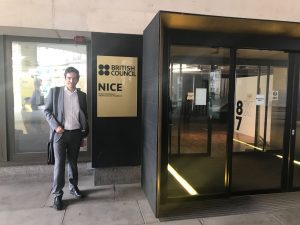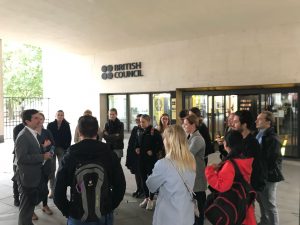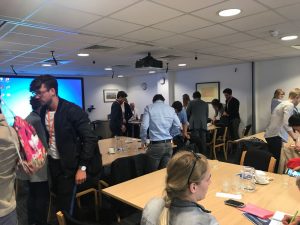
After yesterday’s ducking sightseeing tour we returned to the lying lying lions today and are happy to visit the National Institute for Health and Care Excellence (NICE) in London. After the short briefing outside and signing in at reception we were NICEly welcomed with coffee, tea and biscuits. Please, help yourself!

NICE was established in 1999 and is today a Non Departmental Public Body of the Department of Health & Social Care developing guidelines and quality standards. NICE supports decision making at a national level and evaluates the allocation of the limited health care budget. Basically, NICE builds an evidence-based bridge between a new product and its market launch. The ultimate goal of NICE is to ensure more equitable access to healthcare in England and by its purpose reduces post code lottery of care.
The first speaker emphasized the focus of NICE which is value, not price. Budget constraint implies that whenever one treatment is approved and going to be funded by the NHS England, another treatment will no longer be funded. NICE’s role is to support decision making through appraisal programmes. Therefore, NICE compares costs and benefits in order to decide whether a new treatment shall be funded. In detail, NICE assesses how well the new technology works and how much it costs compared to the established practice in the health service.
The second speaker talked about the NICE health technology assessment (HTA) programmes. Basically, the Centre for Health Technology Evaluation has HTA programmes in the following four fields: (1) Technological Appraisal, (2) Diagnostics Assessment, (3) Medical Technologies Evaluation and (4) Highly Specialised Technologies.
Our three key takeaways are:
- Once a product or service has passed the technological appraisal it is going to be funded by the NHS England. This implies that the product has to be available to all patients within 90 days.
- Unlike Switzerland, NICE sets a cost-effectiveness threshold at £20’000-£30’000 per QALY gained when a new technology is being assessed. In the case the technology is beyond the threshold NICE considers it as cost-effective.
- The NHS England has newly introduced a budget impact threshold which considers the costs of a technology after its market launch. The threshold is at £20million/year in the first 3 years.
The third and last speaker talked about the development of quality standards in the health and care system in England. The goal of quality standards is to improve outcomes. NICE quality standards are derived from NICE guidelines and contain a small number of measurable, action-focussed statements that focus on priority areas for quality improvement. The quality standards do not replace the guidelines, but go along with them.

After three interesting presentations we would like to take this opportunity to say a great thank you to the speakers. You did an excellent job. Thanks to you we gained a unique and valuable insight into the activities at NICE.
And now it’s time to call it the day – have a NICE evening!

posted by Raphael, Nicolas, Julia & Monika